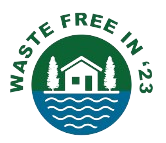Full Summary: Floating Bio-Islands for Wastewater Treatment
Title: Floating Bio-Islands for Wastewater Remediation Using Aquatic Plants and Microalgae
Prepared by: Dr. Jasmin K. A., PhyEcoSyS Pvt. Ltd, Cochin, India
View original: Included PDF document
Suggested category on WF23 Technical References & Research page: Organic Waste Processing
🌍 What is this project about?
This project introduces an eco-friendly and affordable way to clean polluted rivers, lakes, and canals. Instead of using expensive machines or chemicals, it proposes building “floating bio-islands” made from upcycled plastic boats, barrels, or tanks. These islands float on the water and are filled with fast-growing aquatic plants like duckweed and helpful microalgae.
As water flows slowly through these units, the plants absorb harmful nutrients like nitrogen and phosphorus—just like a natural filter. This improves the water quality, reduces algae blooms, increases oxygen, and helps fish and insects thrive again.
♻️ Environmental Benefits
Natural Water Cleaning: Plants and algae soak up pollutants and heavy metals, improving the quality of water in rivers, lakes, and canals.
Supports Biodiversity: The floating roots provide habitat for aquatic life like fish and insects.
Reduces Mosquitoes: Gentle water movement prevents mosquito breeding, reducing the risk of diseases.
Carbon Capture: Algae and plants absorb carbon dioxide (CO₂), helping fight climate change.
Reduces Erosion: Floating islands soften waves and protect riverbanks from wearing away.
💸 Economic Benefits
Very Low Cost: Each floating unit costs just $10–20 using local recycled materials.
Local Jobs and Skills: Communities, schools, or NGOs can build and manage these islands, creating green jobs.
Biomass for Reuse: The harvested plants and algae can be:
Turned into biochar for improving farm soil.
Used as animal feed or composted into natural fertilizer.
Converted into biogas or biofuels for energy.
Educational Value: Schools and local groups can use these islands to learn about ecology and sustainability.
CSR Ready: Companies can sponsor floating islands as part of Corporate Social Responsibility (CSR) projects and even brand them.
🧪 How Does It Work?
Each island is made from plastic boats or tanks with small holes for water to flow. Inside, selected plants and algae are grown. As the water moves through, these plants absorb pollutants and store nutrients in their leaves and roots. Every few weeks, the plants are harvested and reused. The islands rise and fall with the water level and can be moved or rearranged easily.
This system needs no electricity or fuel. It’s completely passive—meaning nature does the work. Plus, maintenance is low, and even school groups or volunteers can manage it.
🧠 Why it Matters for Waste Free ’23?
This aligns perfectly with Waste Free ’23’s mission of turning waste into local opportunity. It transforms pollution into plant products, teaches circular economy ideas, and gives communities ownership over their water health—all without expensive technology.
🌐 Added to our Technical References Directory
💡 Also links well with our pages on biochar and water hyacinths.
Got questions?
